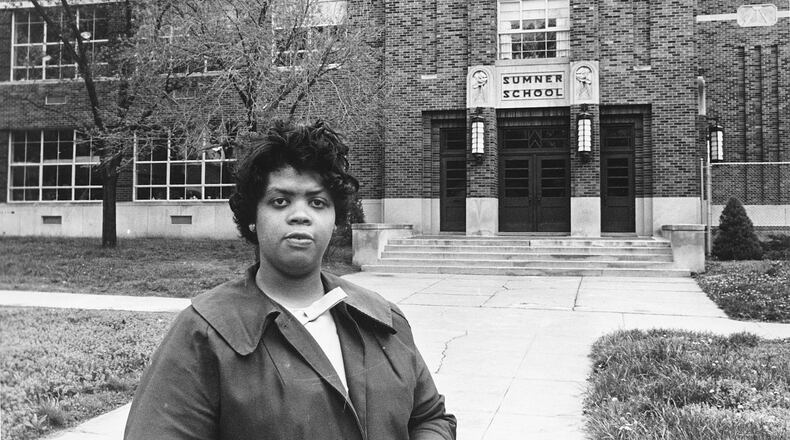Seventy years ago this week, the U.S. Supreme Court handed down the landmark ruling that racial segregation in public schools was unconstitutional.
Before then, the court had been content with a “separate but equal” doctrine that often produced decidedly unequal schools.
There is a tendency to think about the problems that led to the Brown v. the Board of Education of Topeka lawsuit as ancient history, and the Supreme Court decision meant to redress them as necessary back then, when the country was still wandering through a maze of racial inequities.
But milestone anniversaries like this one are moments ripe for reflection and debate. And, over the decades, many luminaries in the fields of law and education have expounded the legacy and effectiveness of Brown v. Board of Education.
Some of these experts point out that the decision, issued on May 17, 1954, fueled the civil rights movement, and, for them, that’s reason enough to declare it a success. Others point out that, in many areas of the country, schools once again lack racial diversity and question whether it was all worth it.
These positions may be valid, but we should know by now that the results produced by the Brown v. Board of Education can’t be simply labeled a success or failure.
Segregation was America’s apartheid. It was the dominant political issue during Reconstruction in the 1870s. Even then, in that short-lived span of time post-emancipation, when Black people enjoyed some civil rights, public schools were not part of the deal.
As Ralph McGill, editor and publisher of The Atlanta Constitution wrote in 1953, segregation was a topic many white Southerners just didn’t want to talk about.
To them, “If people wouldn’t talk about these things, they would resolve themselves,” wrote McGill, describing a kind of magical thinking.
When the Brown v. Board of Education ruling came down, many Black people considered it a great victory, the scope of its importance matched only by the Emancipation Proclamation for the promise it offered to future generations of Black children.
But Southern states held on to segregation well into the 1970s. A decade after Brown v. Board of Education, only about 1.2% of Black children attended public schools with white children in the 11 states of the former Confederacy.
In Atlanta, the lack of progress toward desegregation led to a lawsuit. By 1973, a compromise was reached.
In return for the appointment of the city’s first Black superintendent, Alonzo Crim, and other school leadership, the majority of students in Atlanta Public Schools remained in segregated schools. At the time, 106 of 153 schools remained segregated (86 were predominantly black and 20 were predominantly white). With the compromise, the number of students in desegregated schools increased from 27,236 to 38,718.
Brown v. Board of Education clearly had an impact, but it didn’t always feel like progress.
Black schools, which nurtured Black students and applauded their achievements, were decimated; Black teachers were stripped of careers and prestige; Black students were plunged into sometimes hostile environments where educators and peers had low expectations for their success.
Schools are more racially mixed today than they were in the years preceding Brown v. Board of Education. Still, diversity and lack of resources once again are issues in some areas, having crept back via school choice, charter schools and, as indicated in recent headlines, school vouchers.
Data from the National Center for Education Statistics revealed that, in 2021, 59% of Black students and 61% of Hispanic students in the U.S. attended predominantly minority schools.
In his 2001 book, “Brown v. Board of Education: A Civil Rights Milestone and its Troubled Legacy,” author James T. Patterson ends with a quote from Jack Greenberg, the attorney who succeeded Thurgood Marshall as head of the NAACP’s legal defense fund.
“Altogether, school desegregation has been a story of conspicuous achievement flawed by marked failures, the causes of which lie beyond the capacity of lawyers to correct. Lawyers can do right, they can do good, but they have their limits. The rest of the job is up to society.”
Of course, historians say the legacy of Brown v. Board of Education extends beyond schools. The court’s rejection of the separate but equal doctrine was used again and again to fight segregation in the public sphere.
Those engaged in the cause for civil rights would go on to fight Jim Crow laws across the South. They would secure federal protections for voting rights and fair housing.
Instead of weighing the ways in which Brown v. Board of Education did or did not succeed, let this 70th anniversary serve as an opportunity to ponder what else we as a society need to do to give all children access to a quality education.
Greenberg was right. What happens in the future is on us.
Read more on the Real Life blog (www.ajc.com/opinion/real-life-blog/) and find Nedra on Facebook (www.facebook.com/AJCRealLifeColumn) and Twitter (@nrhoneajc) or email her at nedra.rhone@ajc.com.
About the Author






